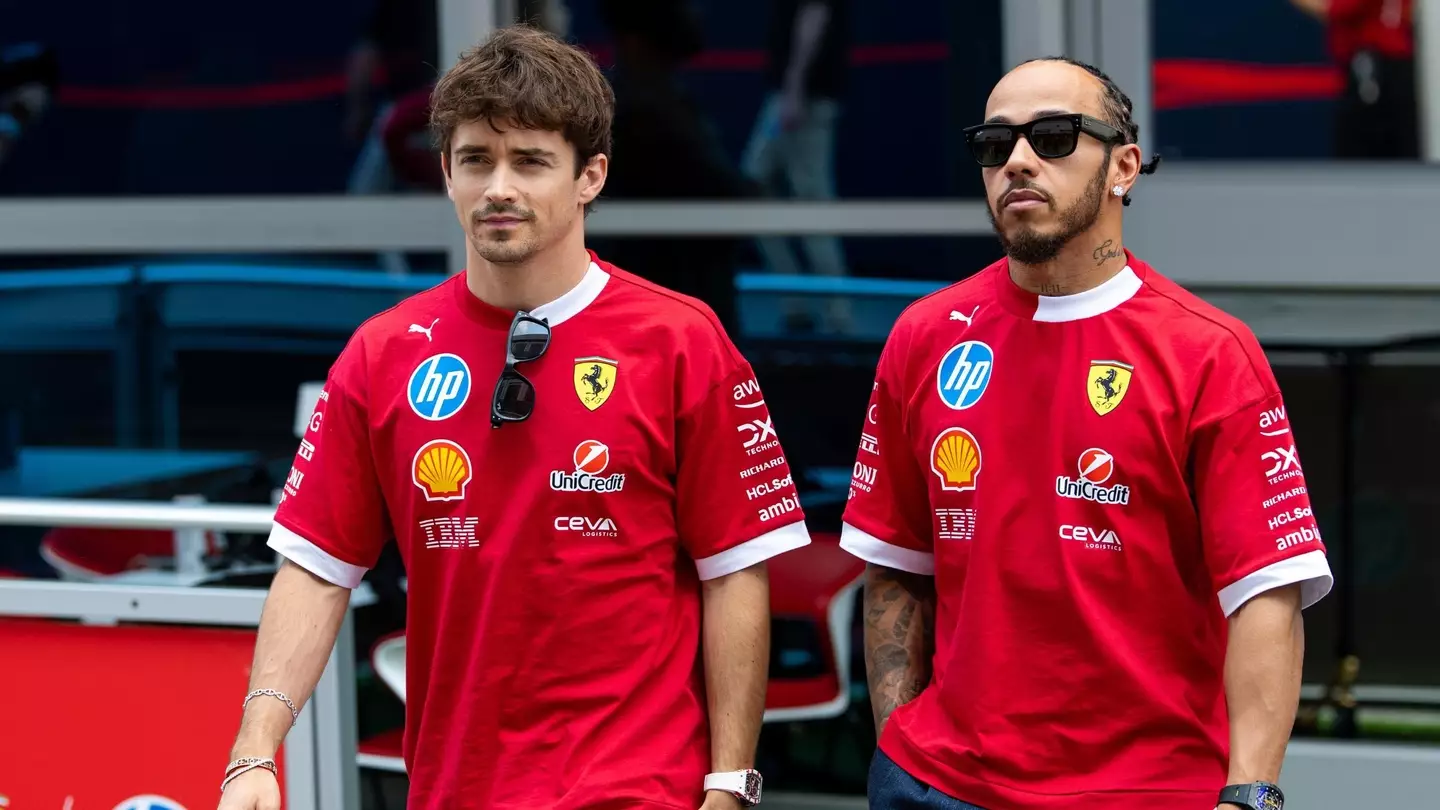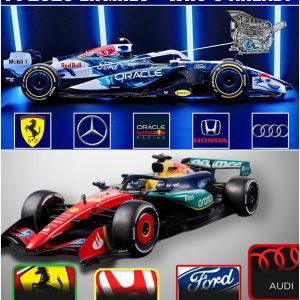On the final straight at the Baku circuit, in 15 fateful seconds, Lewis Hamilton didn’t just refuse to obey a Ferrari team order; he pulled back the curtain on a strategic dysfunction that has plagued the team for years. This seemingly simple act not only revealed an internal issue but also raised significant questions about how Ferrari operates, especially as they enter a critical transition phase with the arrival of an icon like Hamilton. This isn’t just a story about insubordination; it’s a deep dive into the clash between an old, rigid system and a fresh, strategic mindset that is attempting to reshape an empire.
The Decisive Moment: A Team Order Born from Panic
The situation at Baku was a classic example of a nightmare Ferrari created for itself. Hamilton was running in 8th, Leclerc in 9th, and Yuki Tsunoda in the RB was closing in just two seconds behind, hungry for points. Ricardo Adami, Ferrari’s race engineer, issued a seemingly simple command: “Swap positions, let Charles through.” However, the timing of this order spoke volumes: it wasn’t a calculated strategic decision but a desperate attempt to salvage something from a weekend that had already gone disastrously wrong.
Both Ferrari cars were wounded. Hamilton had just scraped through a shocking Q2 elimination, while Leclerc had crashed in Q3 without even setting a lap time. Leclerc’s car was further compromised by a failing Energy Recovery System (ERS) and a compromised power unit. In this context, Ferrari’s belief that they could orchestrate a seamless position swap with just two laps remaining and a hungry competitor breathing down their necks demonstrated a lack of crisis management and strategic planning. The quaver in Adami’s voice on the radio as he emphasized, “Tsunoda is two seconds behind,” was not a sign of confidence, but evidence of pure panic.
The Truth Behind Hamilton’s “Defiance”
But what really happened on track? An analysis of the race data and radio communications reveals that Hamilton did not simply ignore the team order. Instead, he processed it with the intelligence of a strategic mastermind. The telemetry shows him lifting off the throttle, moving offline to the left, and opening a clear path for Leclerc to pass. This was not rebellion; it was a textbook example of risk management.
However, what the Ferrari pit wall missed was Leclerc’s hesitation. The gap was there, the door was open, but Charles didn’t take it. Why? Because Leclerc’s damaged car couldn’t mount a convincing overtake. Both drivers knew that attempting a risky move with Tsunoda closing in could cost Ferrari not just eighth place, but ninth as well.
Hamilton’s calculation was surgical. He gave Ferrari what they asked for—compliance—but he did it in a way that protected both cars from the real threat behind them. The cameras captured this moment as hesitation, the headlines screamed defiance, but the data told a different story. Hamilton slowed, moved offline, and waited. Leclerc never made the move. At the checkered flag, Hamilton held eighth, Leclerc finished ninth, and Tsunoda remained safely behind in tenth. Ferrari had secured both positions but somehow turned this tactical success into a public relations disaster.

Ferrari’s Reaction: Exposing the Root Problem
The most revealing part of this story isn’t what happened on track, but how Ferrari responded afterward. Their immediate reaction exposed their real problem. Instead of celebrating the fact that they had secured both positions despite the chaos, they turned on their own drivers. The comment that “rules were not respected” wasn’t about strategy; it was about pride. Being denied immediate obedience by Hamilton, even for strategic reasons, cut deeper than losing a position ever could.
Meanwhile, team principal Fred Vasseur dismissed the entire incident as a “misjudgment,” as if a single miscalculation could explain what had just transpired. But engineers from rival teams saw something different in Hamilton’s data trace. According to paddock sources, Mercedes insiders watching the race described it as “vintage Lewis”—protecting multiple positions while the pit wall froze under pressure.
This pattern becomes clear when you examine Ferrari’s radio communications over past seasons: vague orders, shifting blame, and a culture where preserving hierarchy matters more than maximizing results. Hamilton’s measured response in Baku wasn’t about disrespecting rules; it was about exposing a system that prioritizes appearance over substance.
Hamilton: No Longer the Newcomer, but the Culture Shaper
This incident, however, reveals something even more significant about Hamilton’s future role at Ferrari, and it’s not what anyone expected when he signed that contract. What we witnessed in Baku wasn’t just a failed team order; it was Hamilton beginning to reshape Ferrari’s culture from within.
At Mercedes, Hamilton worked with engineers who provided clarity. Bono’s (Hamilton’s race engineer at Mercedes) instructions were sharp, built on trust and clear communication. At Ferrari, Hamilton has discovered a system where silence becomes a weapon and vagueness serves as a shield. The evidence suggests Hamilton is no longer the outsider adapting to Ferrari’s methods; he is becoming the voice that forces Ferrari to confront its own weaknesses. His calm response to an impossible order didn’t just protect the team’s points; it exposed the dysfunction that’s been holding Ferrari back from championship contention.
:quality(75)/media/pictures/2025/09/22/3384380.jpg)
The Future of Ferrari: A Battle of Old vs. New
Consider the broader implications. With seven races remaining in what could be a crucial constructors’ championship fight, Ferrari is broadcasting confusion while their rivals demonstrate unity. Mercedes rises through clear communication, Red Bull survives through operational efficiency, but Ferrari continues to fracture in public view.
This brings us to the questions that will define the rest of Hamilton’s Ferrari career: Will the team learn from Baku and adapt their communication style to match Hamilton’s strategic thinking, or will they continue trying to impose a hierarchical system on a driver who’s proven he sees situations more clearly than their pit wall?
The upcoming races will be crucial. Every team order, every strategic decision, every radio communication will be scrutinized, not just for its immediate impact, but for what it reveals about Ferrari’s ability to evolve. Hamilton has already shown he won’t simply comply with flawed instructions; he’ll execute them in ways that expose their weaknesses.
For Leclerc, the stakes are equally high. His response after Baku suggests a driver struggling with the reality that Ferrari’s protection of him may be weakening his position rather than strengthening it. Every complaint about “rules not being respected” makes him appear less like a team leader and more like someone caught in Ferrari’s storm.
In the end, Hamilton’s victory in Baku wasn’t measured in championship points; it was measured in control. He turned Ferrari’s trap into a teaching moment, their dysfunction into data, their confusion into clarity. The empire he joined may be built on legendary success, but it’s also haunted by systemic problems that have prevented them from maximizing their potential. The civil war at Ferrari isn’t between Hamilton and Leclerc; it’s between old methods and new realities. And based on what we saw in Baku, Hamilton isn’t just driving their cars anymore; he’s driving their evolution.





